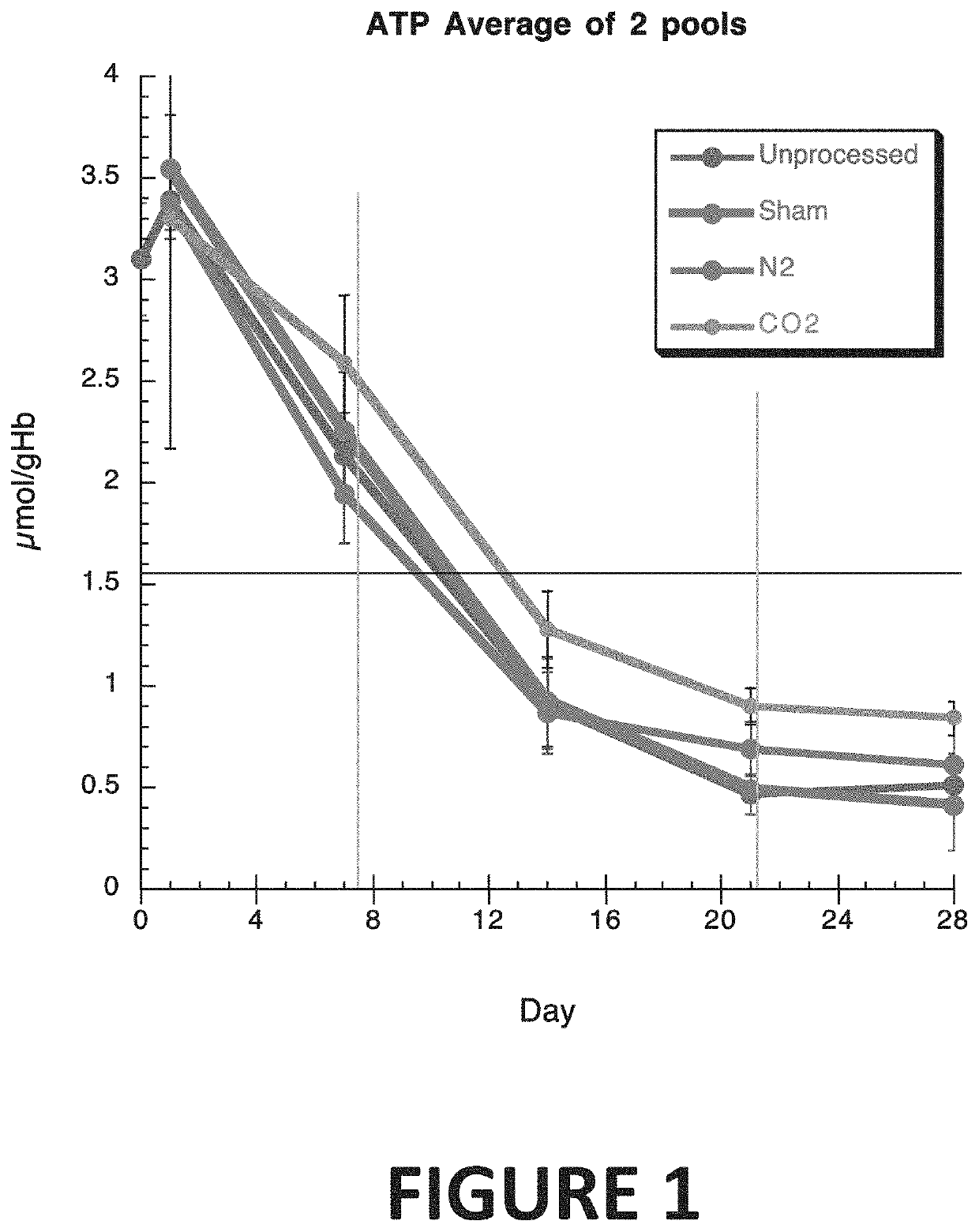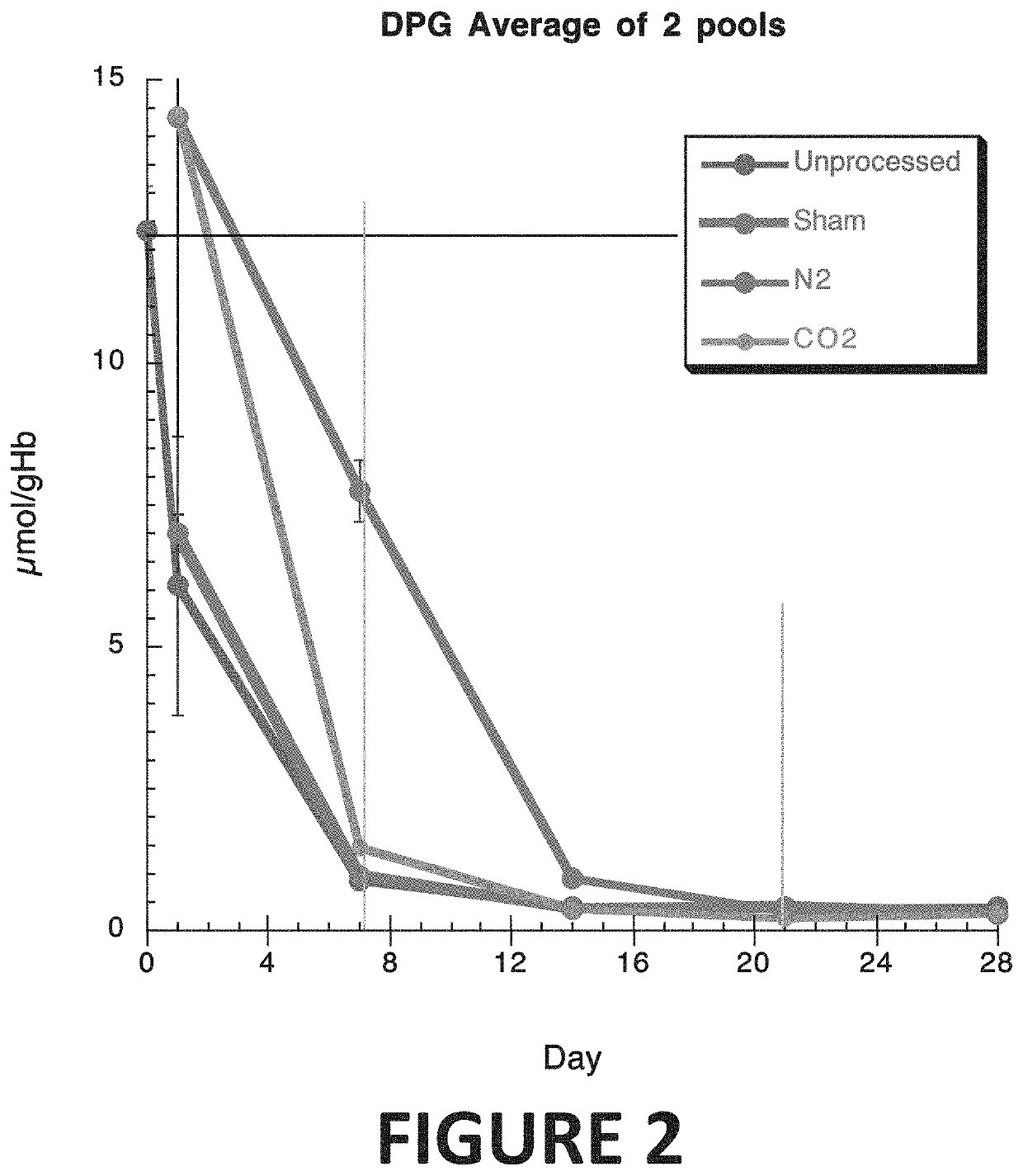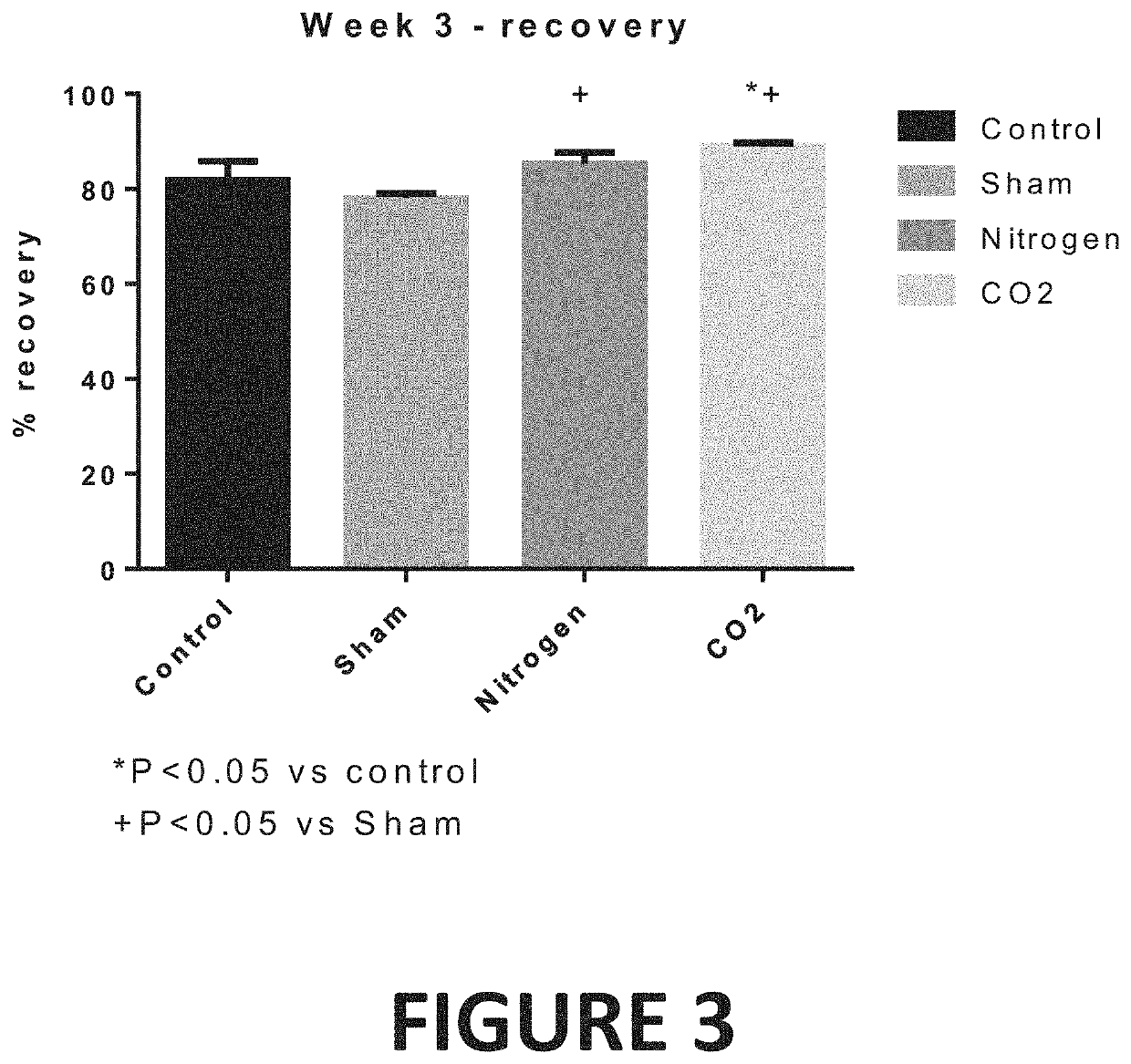Methods and treatment of trauma
a technology for hemorrhagic shock and trauma, applied in the field of trauma and hemorrhagic shock treatment, can solve the problems of increased plasma lactate level, anaerobic metabolism, and oxygen debt, and achieve the effect of reducing the amount of blood needed
- Summary
- Abstract
- Description
- Claims
- Application Information
AI Technical Summary
Benefits of technology
Problems solved by technology
Method used
Image
Examples
example 1
Collection of Blood and Sample Preparation
[0121]Each pool of red blood cells are collected from a total of 12-14 rats in CP2D anticoagulant. The pooled blood is leukoreduced using neonatal leukoreduction filter, component separated and RBCs are stored in AS-3 additive solution. Total of two pools of RBCs are collected. Each pool is split four ways: Unprocessed control (C), sham control (SC), oxygen-reduced (OR) and oxygen and carbon dioxide reduced (OCR). For C, SC, OR and OCR units. RBC subunit is processed by transferring into 80 mL, PVC blood transfer bag and final RBC products are made by gas exchange process. The RBC bags except for C are filled with 100% N2 (for OR), or 95% N2 / 5% CO2 (for OCR) or air (SC) through sterile filter and gently rotated on its long side at 2-3 RPM (except for C). For OR and OCR units, after 10 minutes, gas is removed through the filter and fresh gas is introduced for subsequent gas exchange process. This process is repeated 5-8 times until target % S...
example 2
Recovery of Oxygen Reduced Blood
[0123]A small volume (less than 200 μL) of Control, OR-, and OCR-blood stored for 3 weeks is labeled with techniteum-99m. Animals are transfused with labeled RBC (less than 200 uL) and circulating radioactivity is measured periodically up to 24 hours in order to estimate fraction of transfused RBC surviving 24 hours after transfusion. As shown in FIG. 3, significantly more OR- and OCR-RBCs are recovered compared to control RBCs when RBCs were stored for three weeks.
example 3
Rat Model of Hemorrhagic Shock Resuscitation
[0124]Collection of blood and sample preparation: Each pool of red blood cells are collected from a total of 12-14 rats in CP2D anticoagulant. The pooled blood is leukoreduced using neonatal leukoreduction filter, component separated and RBCs are stored in AS-3 additive solution. Total of six pools of RBCs are collected. Two pools are prepared for conventional storage (control). Two pools are depleted of oxygen (oxygen reduced; OR), and the remaining two pools of blood are depleted of oxygen and carbon dioxide (oxygen and carbon dioxide reduced; OCR). Each of the four pools to be reduced is processed by transferring RBCs into 600 mL PVC blood transfer bag and final RBC products are made by gas exchange process. The RBC bag is filled with 100% N2 (for OR), or 95% N2 / 5% CO2 (for OCR) through sterile filter and gently rotated on its long side at 60-90 RPM. After 10 minutes, gas is removed through the filter and fresh gas is introduced for sub...
PUM
 Login to View More
Login to View More Abstract
Description
Claims
Application Information
 Login to View More
Login to View More - R&D
- Intellectual Property
- Life Sciences
- Materials
- Tech Scout
- Unparalleled Data Quality
- Higher Quality Content
- 60% Fewer Hallucinations
Browse by: Latest US Patents, China's latest patents, Technical Efficacy Thesaurus, Application Domain, Technology Topic, Popular Technical Reports.
© 2025 PatSnap. All rights reserved.Legal|Privacy policy|Modern Slavery Act Transparency Statement|Sitemap|About US| Contact US: help@patsnap.com



